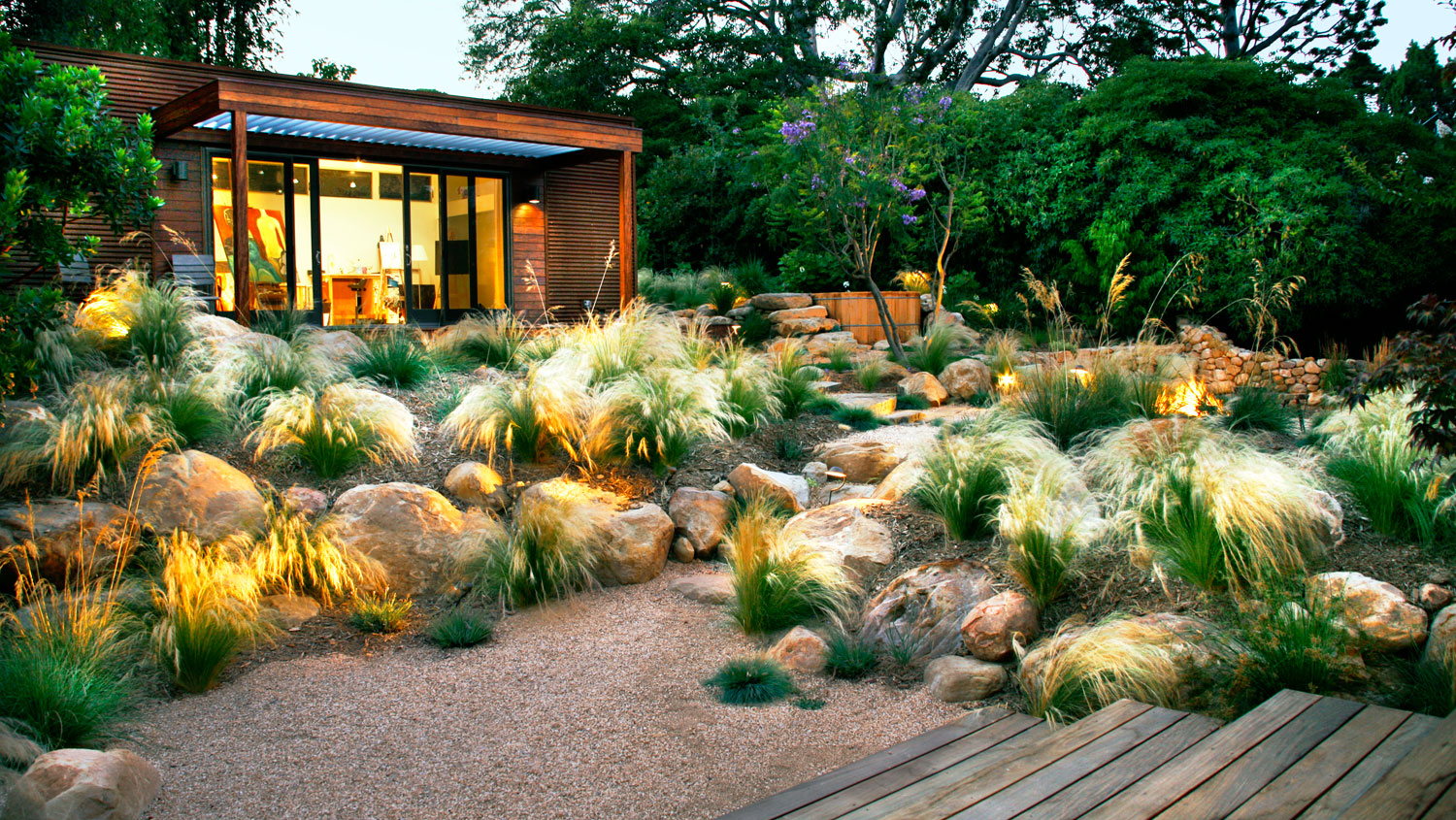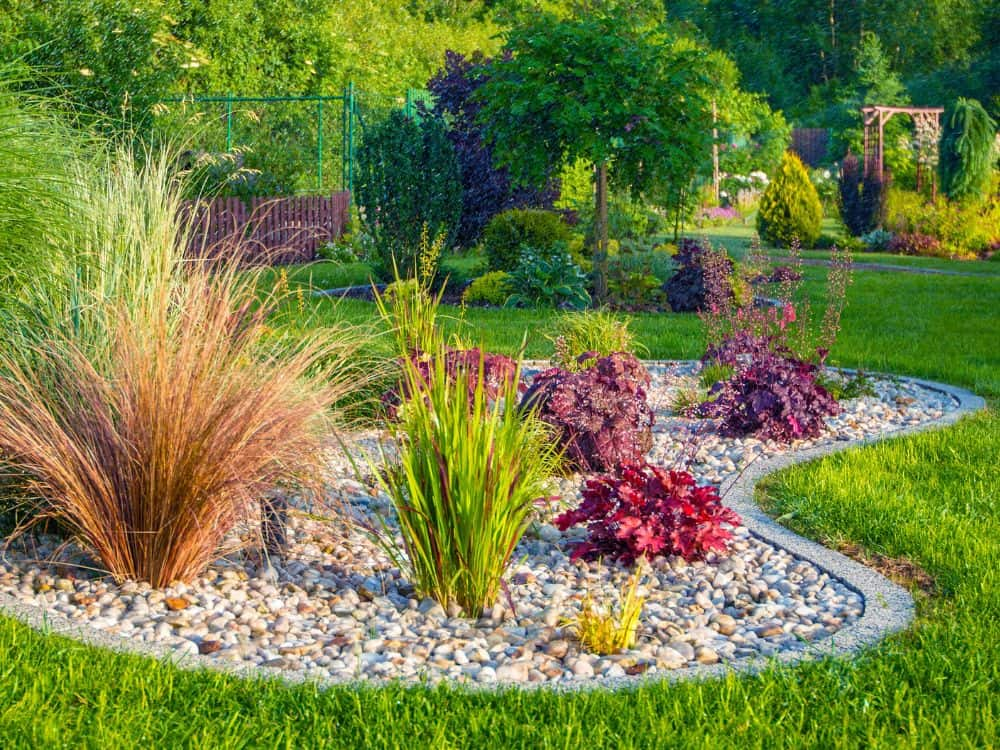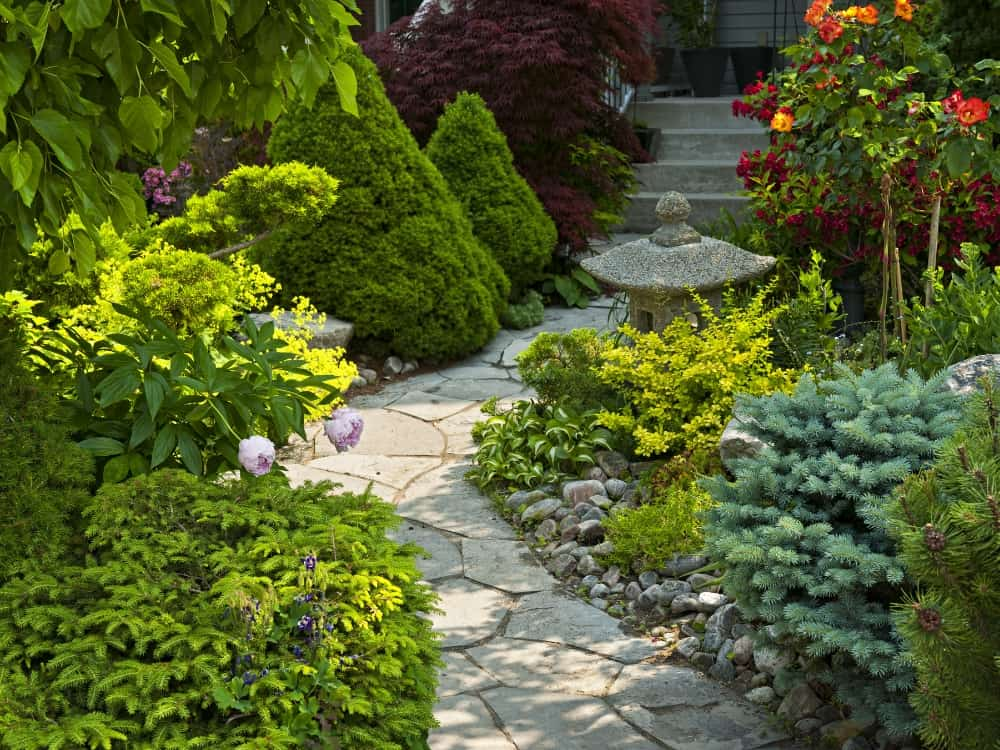
In 2025, more homeowners, cities, and developers are turning to eco-friendly landscaping. It’s no longer just a trend it’s a responsible, cost-saving, and beautiful way to care for the land. With the rising effects of climate change and water shortages, choosing green gardening options has become an essential step in protecting the planet.
From water-wise gardens to native plants and composting, eco-friendly landscaping offers many ways to create outdoor spaces that are sustainable and beautiful at the same time.

Eco-friendly landscaping, also called sustainable landscaping, is a method of designing and maintaining outdoor spaces in a way that is kind to the environment. The goal is to reduce waste, save water, lower energy use, and protect wildlife while still creating a beautiful and enjoyable garden.
Unlike traditional landscaping, which often uses chemical fertilizers, thirsty grass lawns, and non-native plants, eco-friendly landscaping works with nature—not against it.
The reasons to go green in your yard are growing every year. Here’s why more people are choosing eco-friendly landscaping in 2025:
Choosing plants that naturally grow in your region is a key part of sustainable landscaping. Native plants are used to the local climate, pests, and rainfall. They require less water, fewer chemicals, and less attention.
In desert regions, succulents and cacti are perfect. In tropical areas, ferns and palms thrive. Look up your local plant guide to find the best options for your space.
Traditional sprinklers waste a lot of water. Smart irrigation systems use sensors to water your garden only when needed. Drip irrigation systems, which deliver water directly to plant roots, also save large amounts of water compared to overhead sprinklers.
Lawns are one of the biggest water users in landscaping. Reducing or replacing lawn areas with ground covers, native grass alternatives, or stone pathways can make a big difference.
Consider alternatives like:
Instead of using synthetic fertilizers, compost your food scraps and garden waste to create natural plant food. Mulching your beds helps retain moisture in the soil, keeps weeds down, and adds nutrients over time.
Avoid toxic pesticides that can harm pets, birds, and beneficial insects. Instead, invite natural pest controllers like ladybugs or praying mantises to your garden. Planting garlic, basil, or marigolds can naturally repel unwanted bugs.
Eco-friendly landscaping is not just for large homes or country gardens. Cities around the world are turning rooftops, balconies, and small yards into green oases using sustainable techniques.
In cities like Singapore, San Francisco, and Dubai, eco landscaping is being used on large scales—on rooftops, around public parks, and even highways.
Eco-friendly landscaping is now a fast-growing industry. Landscape designers who specialize in sustainable practices are in high demand. Homeowners, schools, and even businesses want green spaces that are not just beautiful but also eco-conscious.
Companies are now offering services such as:
According to recent reports, the global landscaping services market is expected to reach over $100 billion by 2028, with eco-friendly solutions leading the way.

If you’re thinking about making your yard more eco-friendly, here are a few steps to start with:
Eco-friendly landscaping is more than just a trend it’s a smarter, more sustainable way to live. Whether you have a small balcony or a big backyard, every step you take helps reduce waste, save resources, and support local ecosystems.
In 2025, as people look for ways to live more responsibly, the green movement is thriving right from the garden up.
By switching to eco landscaping, you’re not only creating a beautiful space you’re investing in a healthier planet for future generations
Read More:- Shobha Realty Launches Its Most Luxurious Project Yet—Full Details Inside 2025
